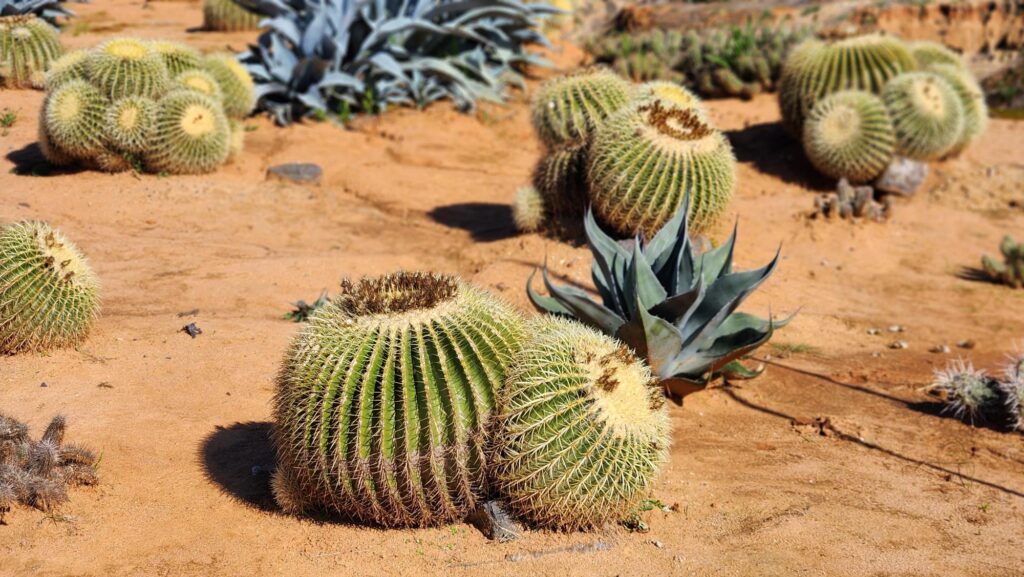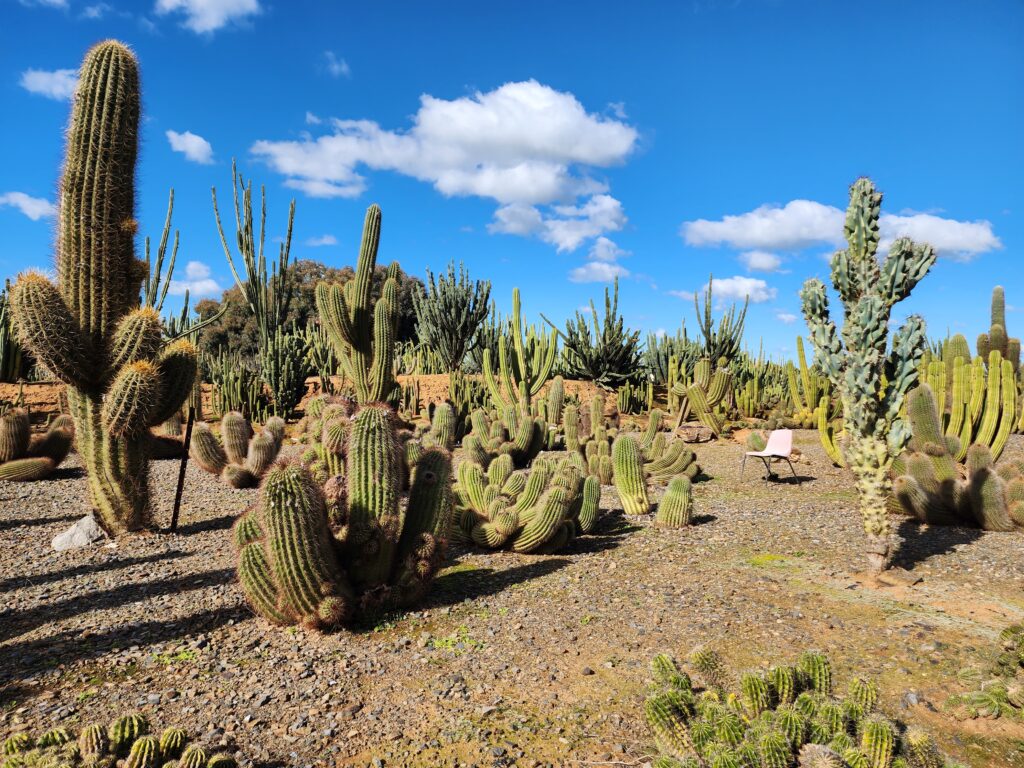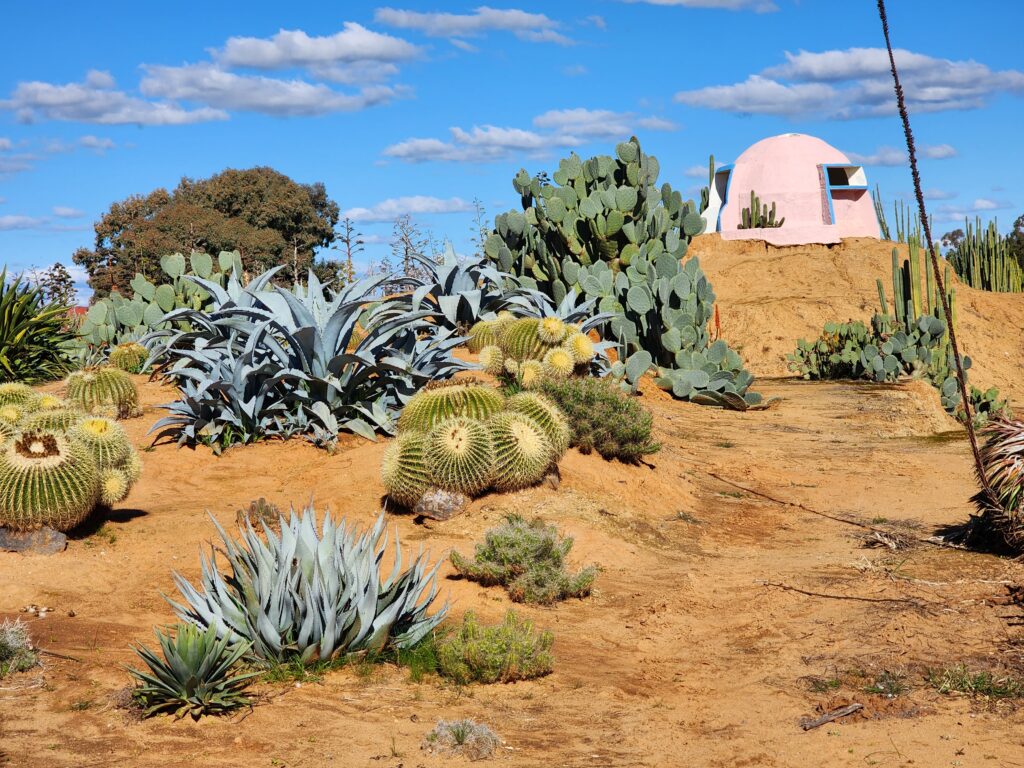Palm Springs, a desert resort city in California, is known for its association with cacti due to its location within the Sonoran Desert. The Sonoran Desert is one of the hottest and driest deserts in North America, spanning across parts of California, Arizona, and Mexico. This region is home to a diverse range of desert plant life, including various species of cacti.
Cacti are well adapted to arid environments, with their unique ability to store water in their thick, fleshy stems and leaves. They have evolved to thrive in the desert’s extreme conditions, making them a prominent feature of the landscape in areas like Palm Springs.
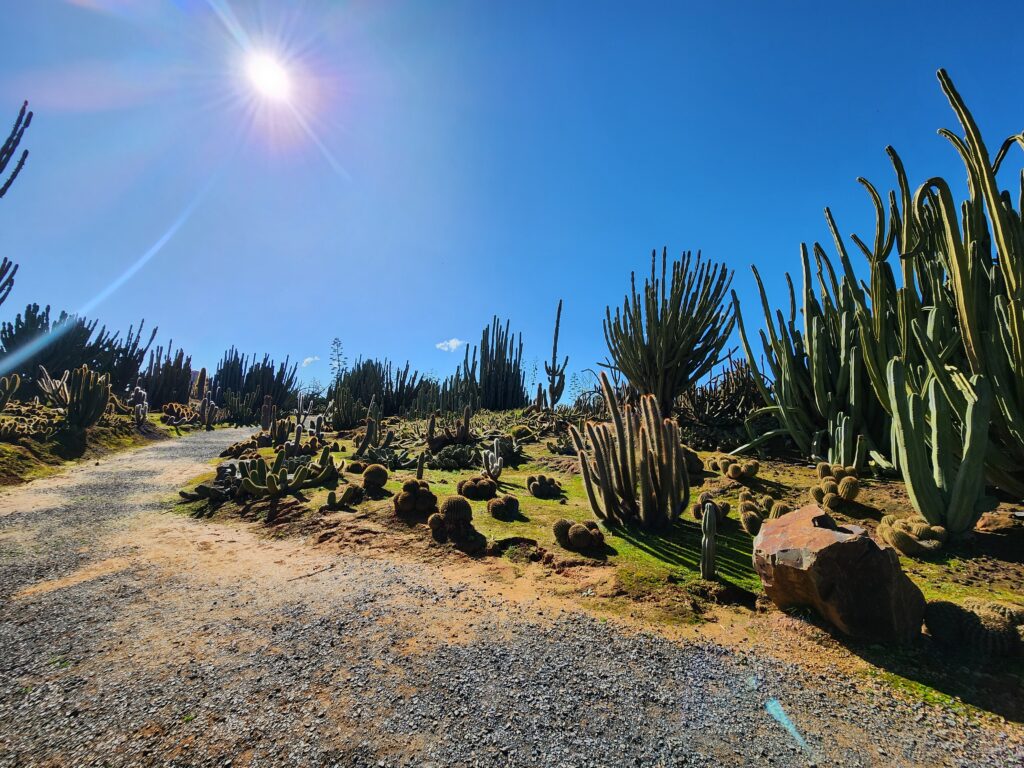
Secret Design Studio visited Cactus Country in the middle of winter.
Palm Springs’ climate is characterized by hot summers and relatively mild winters, making it conducive to the growth of cacti and other desert plants. The city’s residents and visitors often appreciate the natural beauty of the desert landscape, including the various types of cacti that can be found throughout the region.
In addition to their ecological significance, cacti have become symbolic of the desert lifestyle and are often associated with the aesthetics of southwestern and desert-inspired architecture and design. This association has contributed to cacti becoming an iconic element of Palm Springs’ visual identity.
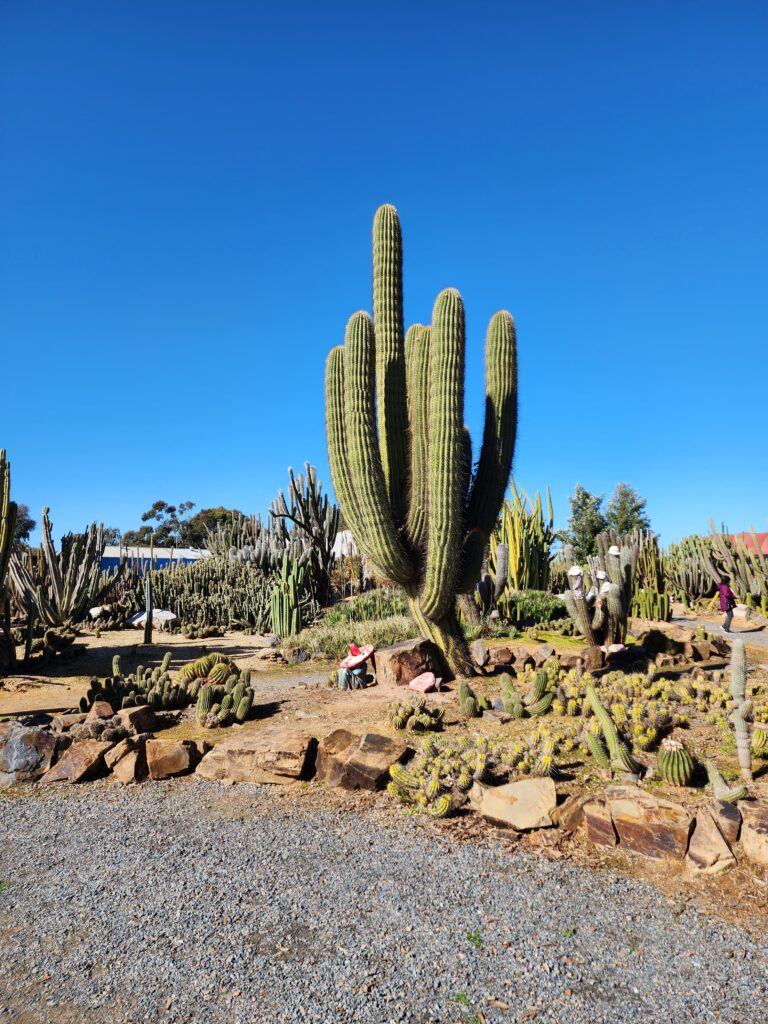
Secret Design Studio visited Cactus Country in the middle of winter.
The relationship between mid-century modern architecture and cacti is largely one of aesthetic and environmental synergy. Mid-century modern architecture emerged in the mid-20th century and is characterized by clean lines, open spaces, and a strong connection to nature. It often emphasizes the use of natural materials and a blending of indoor and outdoor spaces. Cacti and desert plants, with their sculptural forms and unique adaptations to arid environments, complement the design principles of mid-century modern architecture in several ways:
- Aesthetic Harmony: The sleek lines and minimalistic design elements of mid-century modern architecture are often complemented by the distinctive shapes of cacti. The juxtaposition of the architecture’s clean lines with the organic and often dramatic shapes of cacti can create a visually striking and harmonious composition.
- Indoor-Outdoor Connection: Mid-century modern architecture places a strong emphasis on connecting indoor and outdoor spaces. Large windows, sliding glass doors, and courtyards are common features that allow inhabitants to enjoy the surrounding natural environment. Cacti, being native to arid regions like deserts, can be incorporated into the landscape design, blurring the boundaries between indoor and outdoor spaces.
- Natural Materials: Both mid-century modern architecture and desert landscapes celebrate the use of natural materials. This shared preference for materials like wood, stone, and concrete allows for a seamless integration of architecture and the surrounding environment, including cacti and other desert plants.
- Sculptural Elements: Cacti are known for their striking and often sculptural forms. In mid-century modern architecture, the use of interesting geometric shapes and design elements is also common. The geometric precision of the architecture can be complemented by the organic geometry of cacti, creating an engaging visual contrast.
- Climate Considerations: Many mid-century modern homes were designed to respond to their local climates. In desert regions like Palm Springs, where cacti thrive, architects often incorporated passive cooling strategies, shade structures, and outdoor living areas. Cacti, as native desert plants, align with the ecological and climatic considerations of the architecture.
Secret Design Studio visited Cactus Country in the middle of winter.
Overall, the relationship between mid-century modern architecture and cacti is a symbiotic one, where the design principles of the architecture harmonize with the unique aesthetics and environmental characteristics of cacti. As a result, cacti and desert landscaping have become an integral part of the mid-century modern aesthetic, especially in regions like Palm Springs where these design sensibilities converge.
So where can I see Palm Springs style, cacti garden inspiration without leaving Australia for my mid-century modern home?
A quick dive into Wikipedia tells us that the cactus family has about 127 genera with some 1750 known species. Most cacti are succulents, which means that they have thickened, fleshy parts adapted to store water, perfect for the sometimes-harsh Australian climate.
Secret Design Studio recently visited Australia’s largest cactus garden, Cactus Country in Strathmerton, Victoria, where these inspirational cactus gardens are truly breathtaking.
Link to Cactus Country Website
Established in the 1980s, the gardens are spread across twelve acres, and are divided into eight smaller themed gardens to allow you to navigate at your own pace. You could be forgiven for thinking you’ve been transported to an exotic South American location, or even Palm Springs! This isn’t a slick, tourist hotspot, but an example of a man’s passion that has expanded into a charming, quirky (and occasionally kitschy) destination.
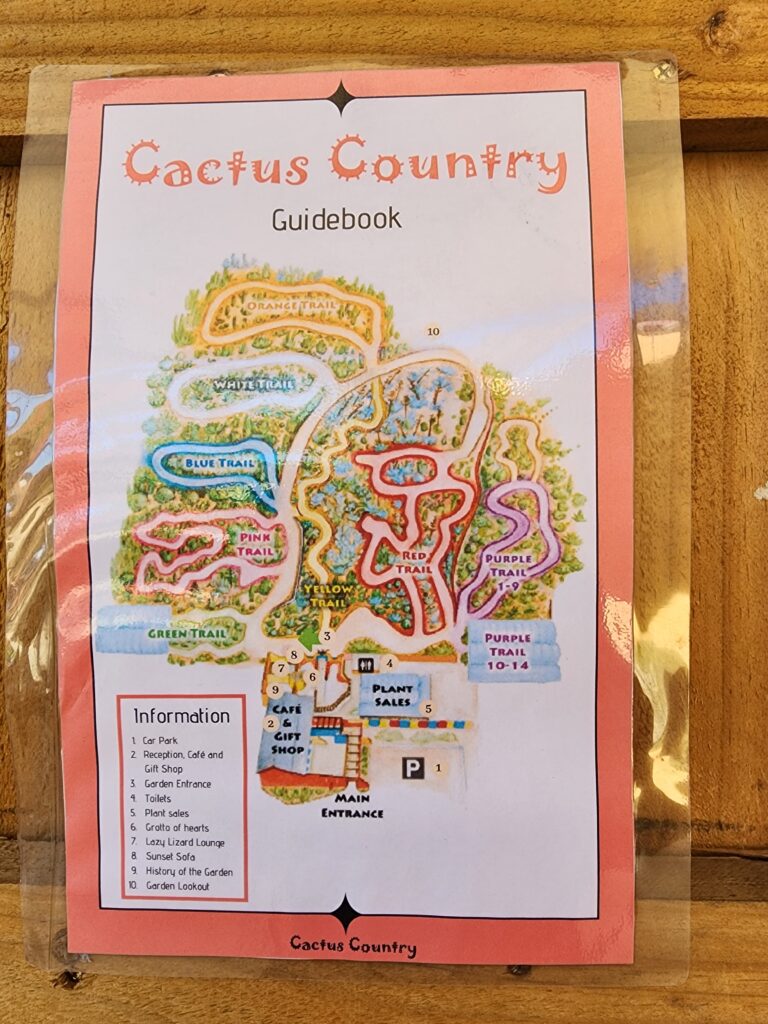
The map doesn’t really give you a sense of scale to Cactus Country.
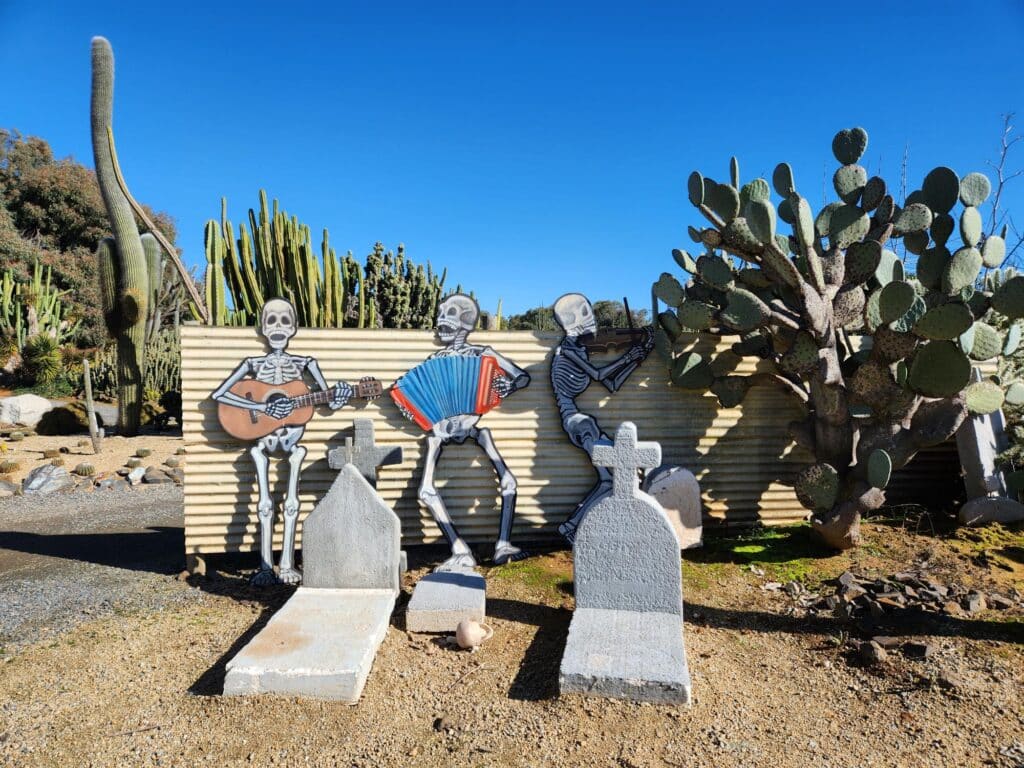
Homage is paid to the Day of the Dead, where those who have died are commemorated and celebrated
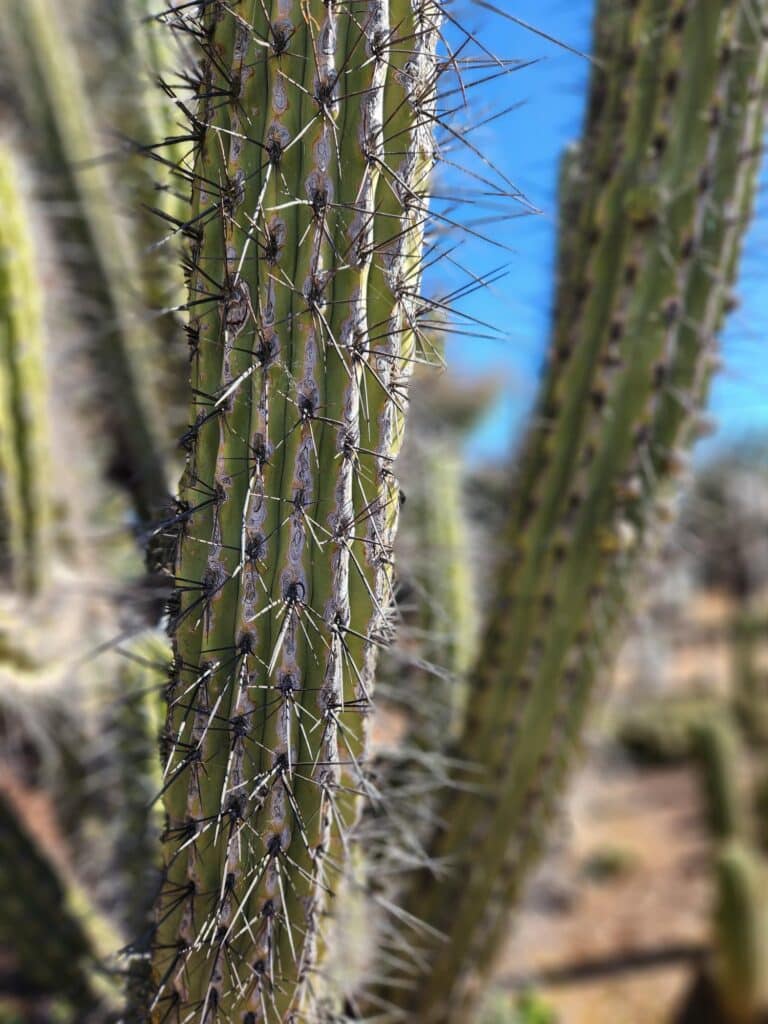
Cactus spines can cause a nasty injury. While the spines might keep cacti safe from predators, you need to give them a respectful distance. While well-behaved dogs are welcome, they should be leashed to prevent damage to themselves and the cacti displays.
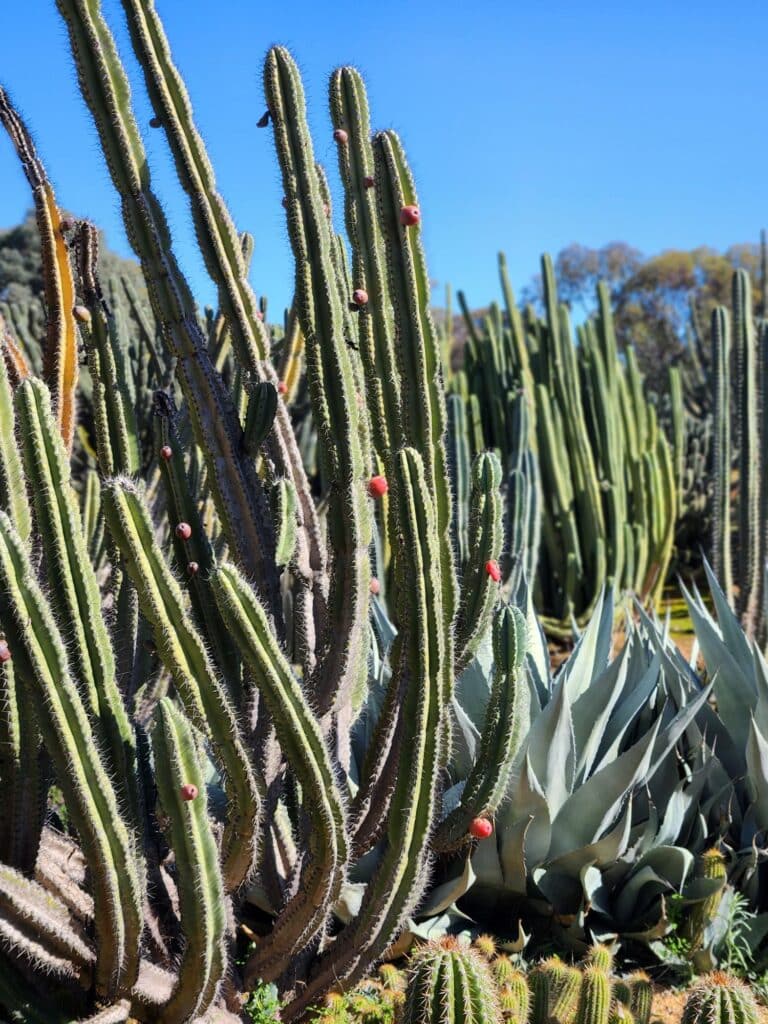
Some cacti produce beautiful blooms, as well as fruit. Like any garden, the timing of the blooms and the fruit depends on the time of year. Some cacti have spectacular flowers that only last 48 hours.
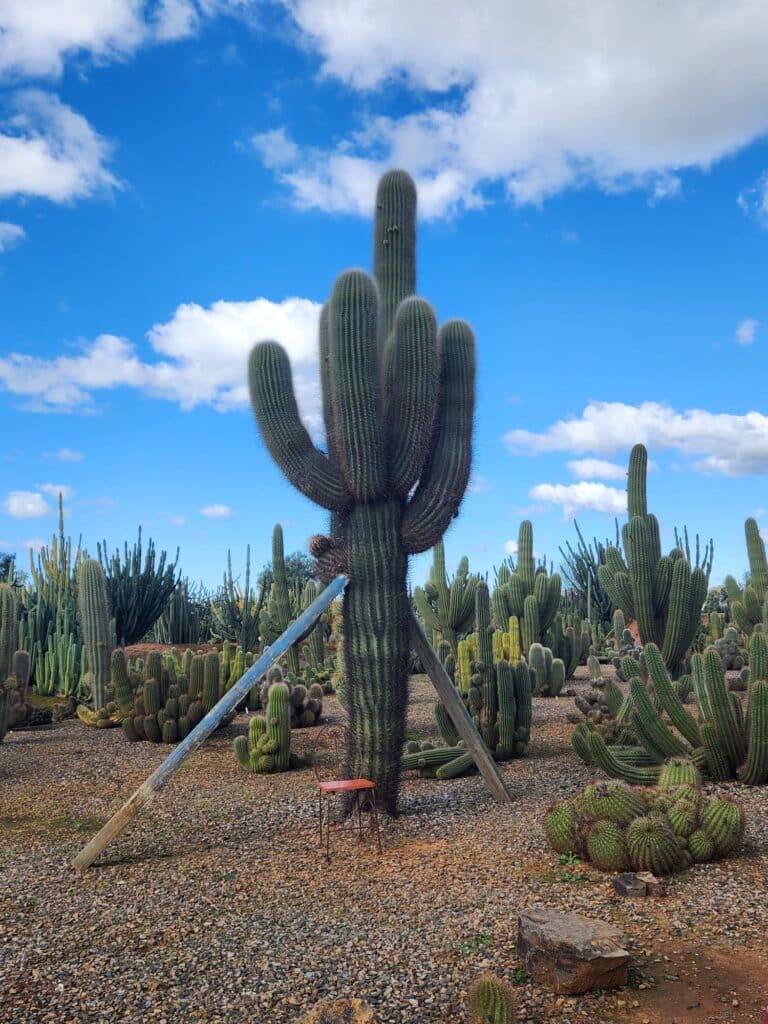
Some giant cacti are propped up as they grow too heavy to carry their own weight.
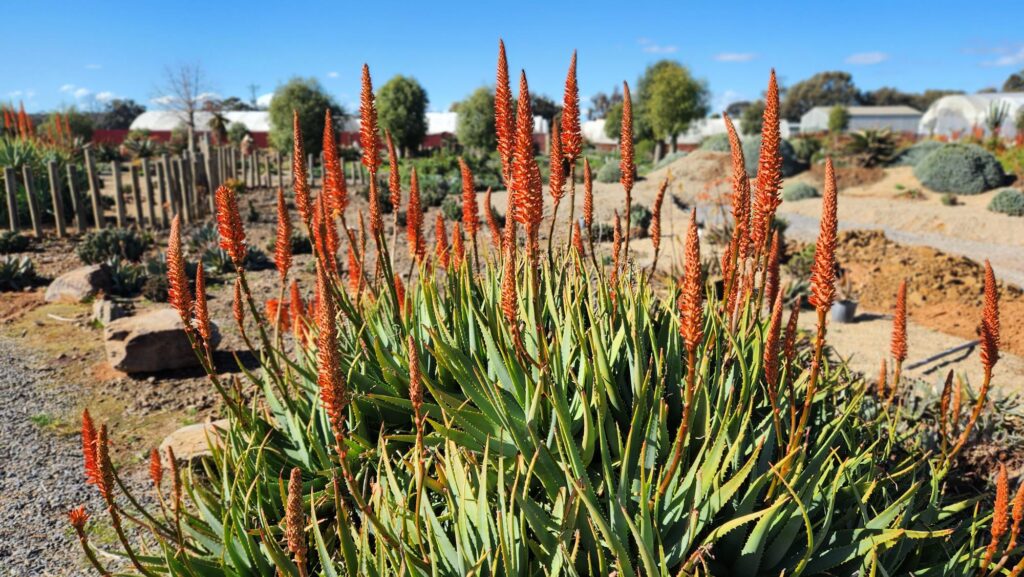
Aloes with brightly-colored spears, which are their best in winter. This photo was taken in July.
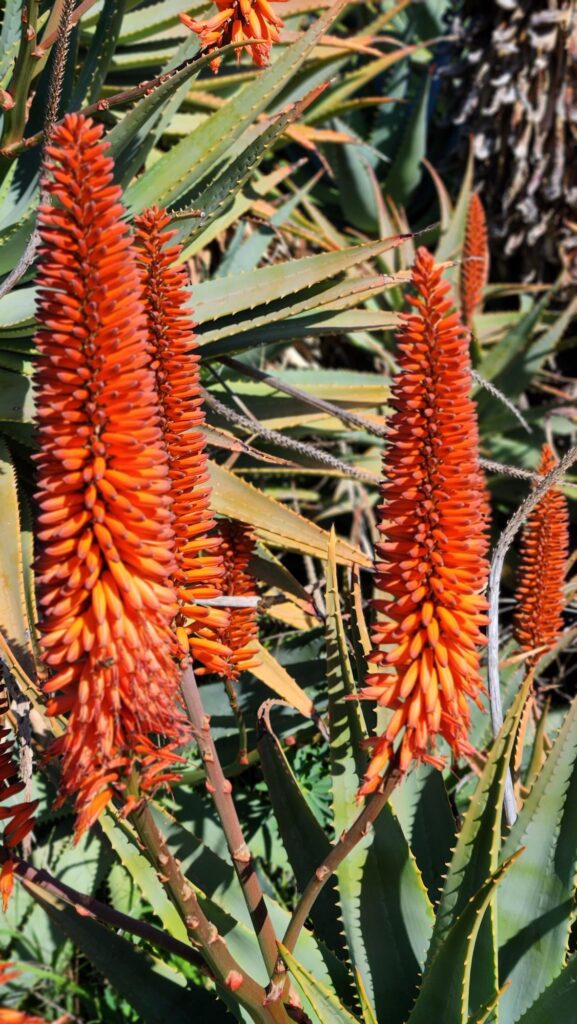
Aloes with brightly-colored spears, which are their best in winter. This photo was taken in July.
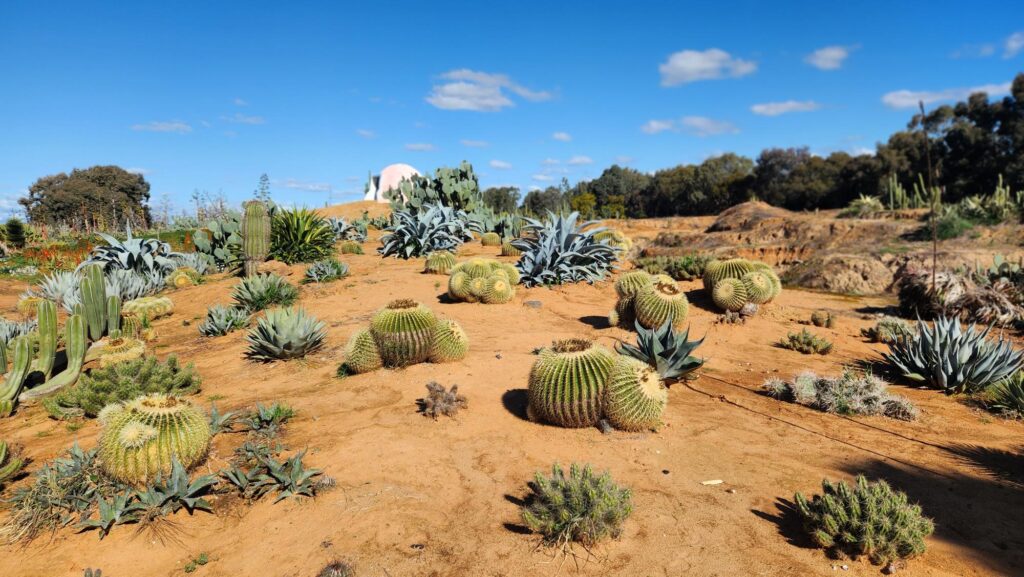
Golden-barrel cactus give a Palm Springs desert feel to the gardens
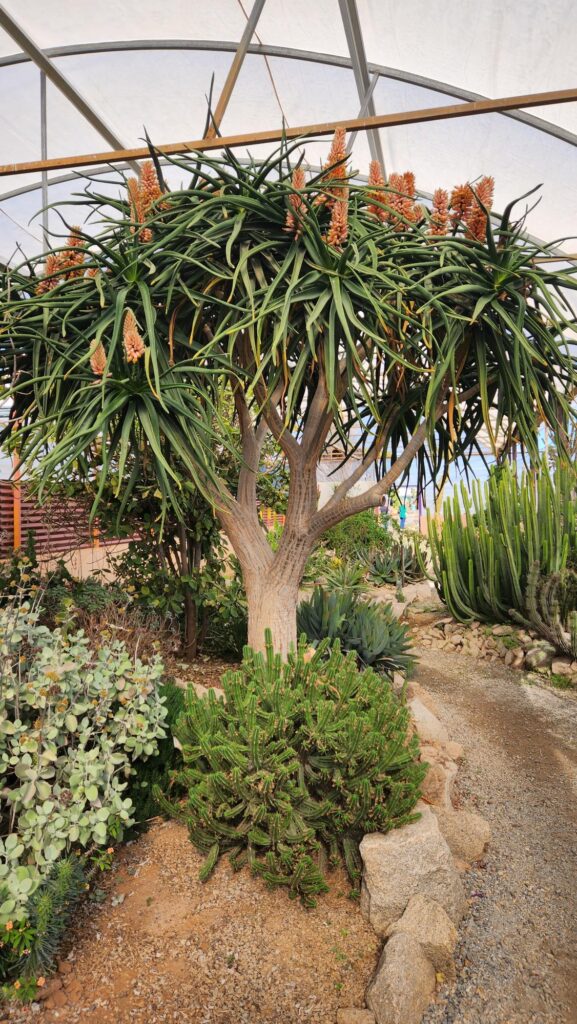
You can have feature trees in your cactus garden. There are a number of hot houses to visit to protect from frosts.
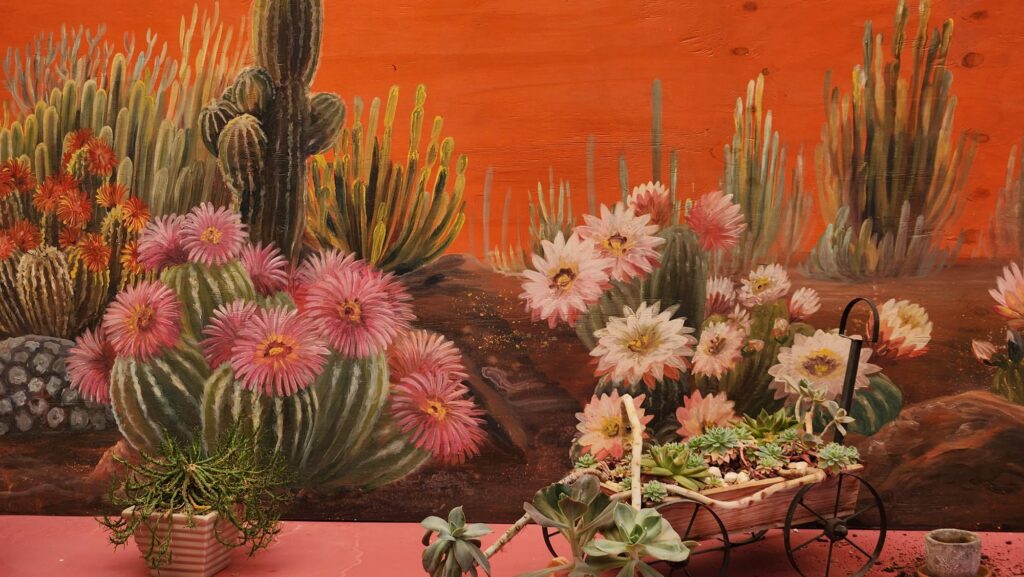
Whimsical artwork complements the plantings. There are lots of large scale murals to complement the gardens.
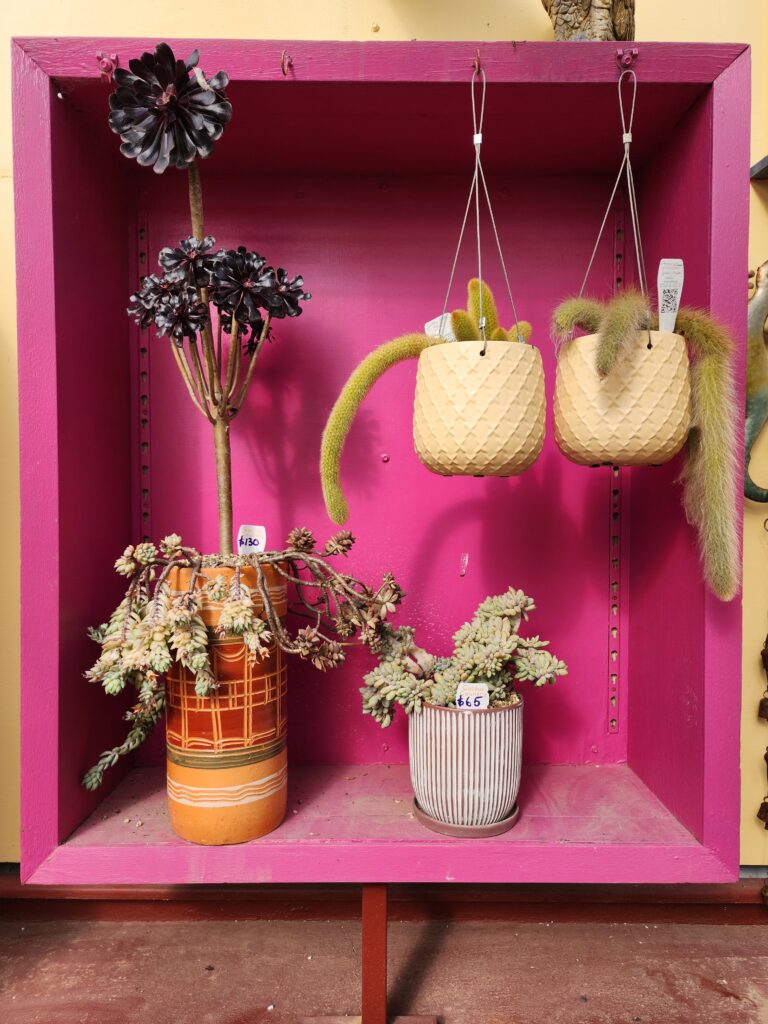
A cacti plant nursery is located near the entry with lots of well-established cacti in decorative pots.
Strathmerton is an easy three hour drive from Melbourne, one hour drive from Echuca Moama, 45 minutes from Shepparton and 35 minutes from Yarrawonga. Located in the picturesque Murray River region of Victoria.
I would allow between two and four hours to visit. We took four hours which included a coffee break, a lunch break (in the pink igloo), a cactus flavoured ice cream, and a cacti nursery visit, at fairly leisurely pace. While it is possible to do the return trip to Melbourne in a day (about three hours each way) it would mean that you are visiting during the hottest part of the day in the summer months – and cacti don’t provide a lot of shade in the middle of the day!


